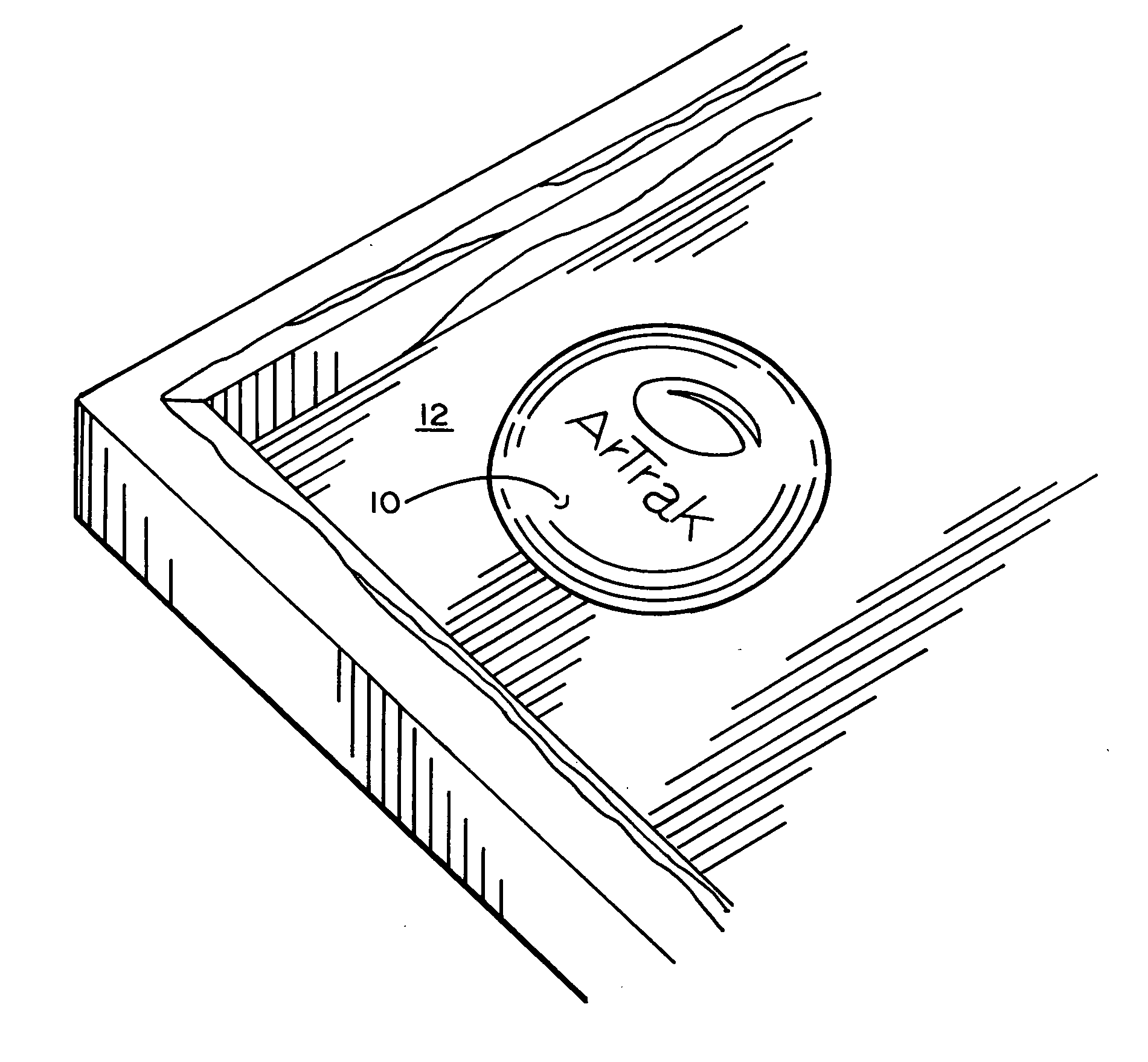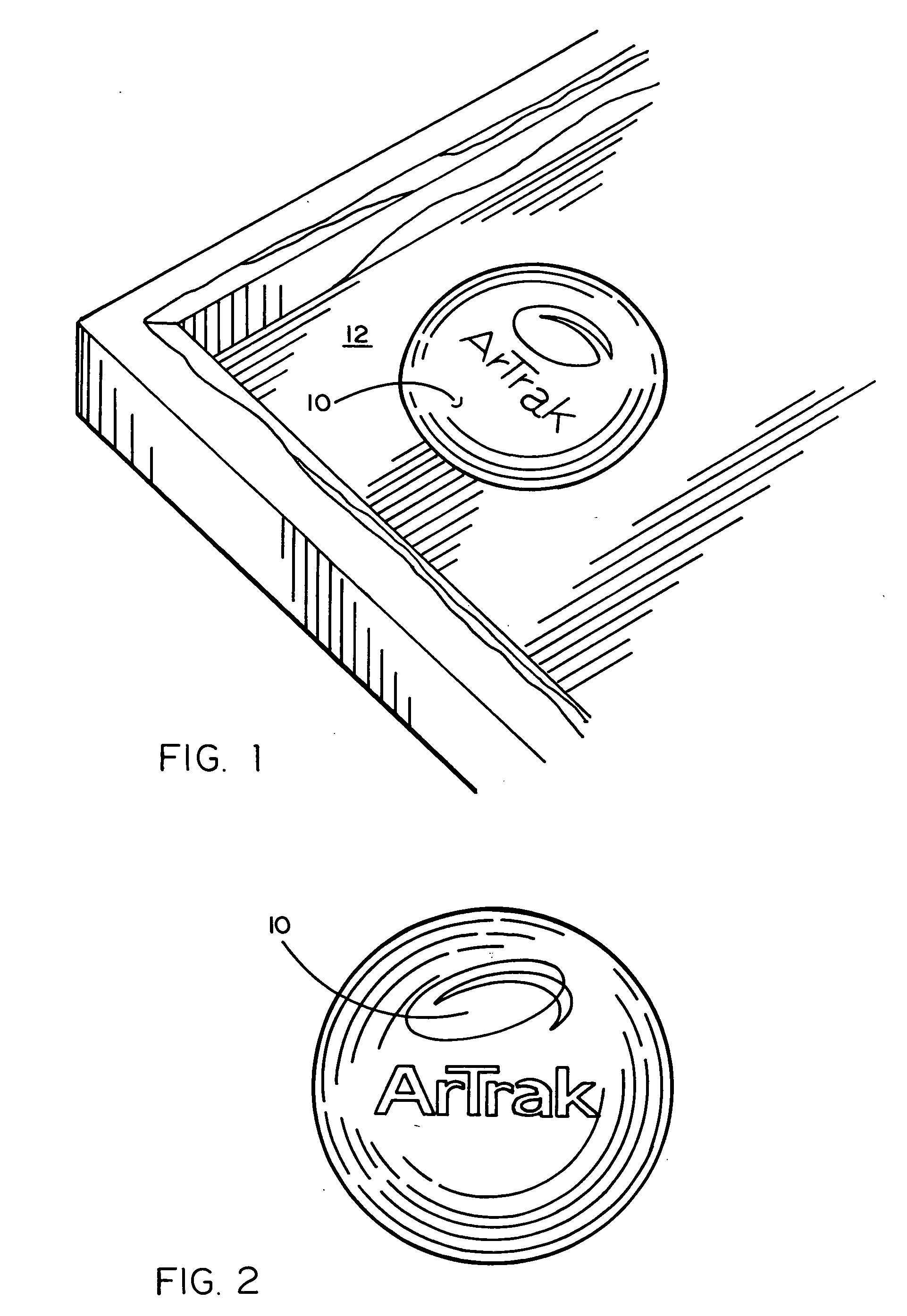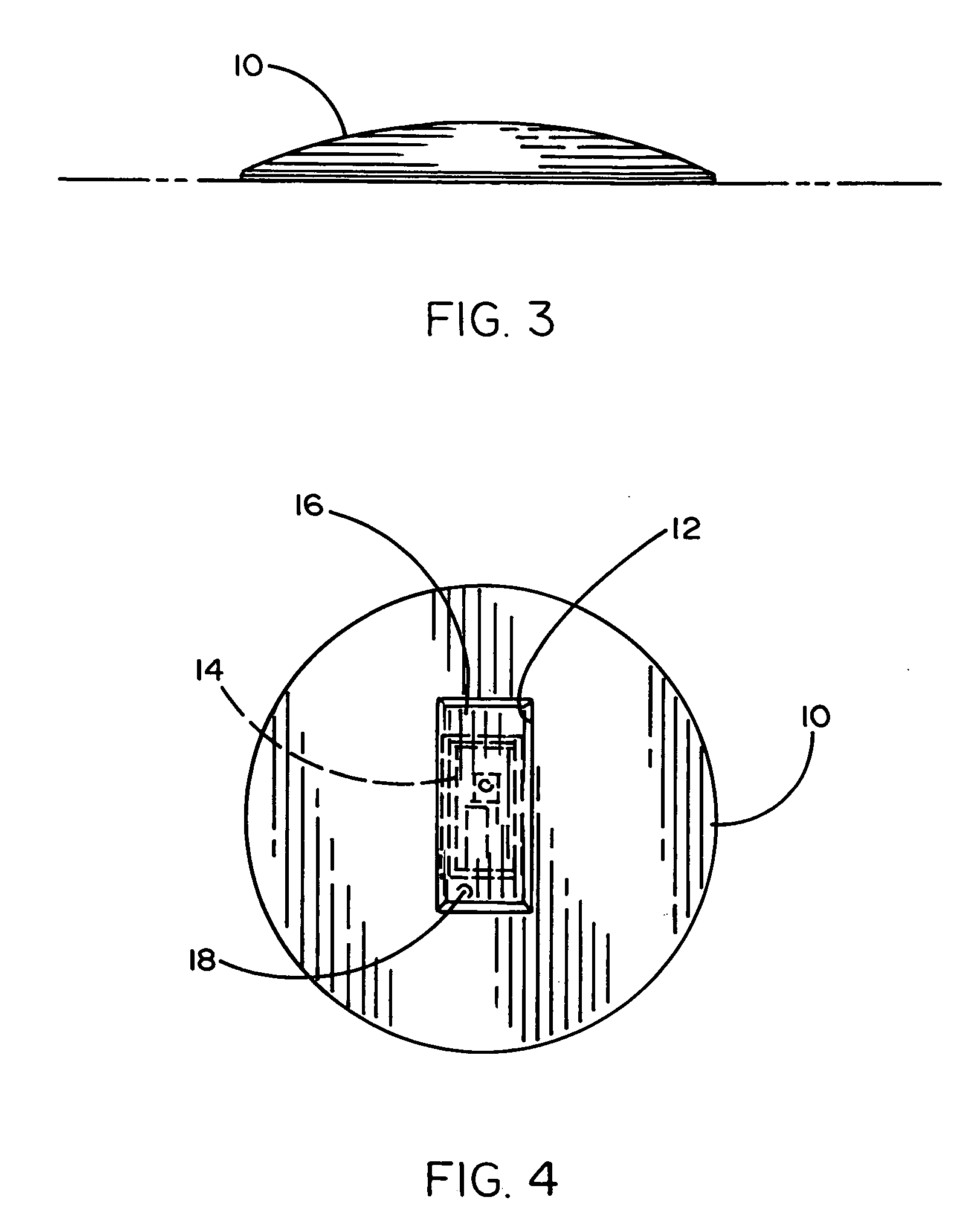Apparatus and method for fine art authentication
a technology of authentication system and apparatus, applied in the field of rfid technology, can solve the problems of ineffective rfid tag and device cannot be removed, and achieve the effect of adding new value to an artist's work
- Summary
- Abstract
- Description
- Claims
- Application Information
AI Technical Summary
Benefits of technology
Problems solved by technology
Method used
Image
Examples
first embodiment
[0019] Referring to the accompanying figures, and particularly FIGS. 1 through 4, it will be seen that an authentication device 10 according to the present invention, is affixed to the back surface of a work of art 12. The surface of the device 10 that is adhered to the art work includes a protective housing 15 that has a recess 16 in which there is positioned an RFID tag 14 which is secured therein by a bonding material 18. This bonding material also secures the device 10 to the art work's surface 12. The bonding is secure, acid-free and will not damage or degrade the art work image. However, any attempt to remove the device 10 will damage or destroy the art work. The bonding material is preferably an acid-free bond strength adhesive. The housing may be made of ABS or PVC which will not interfere with the RFID tag.
[0020]FIGS. 5 and 6 illustrate a second embodiment of the present invention. More specifically, an authentication device 20 comprises a flexible film-based PCB RFID tag 2...
third embodiment
[0021] the invention is illustrated in FIGS. 7 and 8. FIG. 7 illustrates still another RFID configuration comprising an RFID chip 30 attached by a pair of thin wires 31 and 33 to antenna 32, the latter comprising numerous planar circular turns of bare wire. As seen in FIG. 8, the RFID chip 30 is bonded into the housing 34 while the antenna 32 is glued to the artwork 36, but not to the housing 34 using glue 35. The perimeter of housing 34 is also glued to the artwork. In the event that the housing 34 is removed from the artwork, the antenna 32 which remains bonded to the artwork, will be pulled away from RFID chip 30 thereby breaking thin wires 31 and 33 and rendering the RFID tag inoperative.
[0022] The RFID tags used in the present invention may be interrogated by appropriately programmed known off-the-shelf RFID tag scanners commonly available from RFID tag manufacturers such as Texas Instruments and therefore need not be described herein in detail.
PUM
 Login to View More
Login to View More Abstract
Description
Claims
Application Information
 Login to View More
Login to View More - R&D
- Intellectual Property
- Life Sciences
- Materials
- Tech Scout
- Unparalleled Data Quality
- Higher Quality Content
- 60% Fewer Hallucinations
Browse by: Latest US Patents, China's latest patents, Technical Efficacy Thesaurus, Application Domain, Technology Topic, Popular Technical Reports.
© 2025 PatSnap. All rights reserved.Legal|Privacy policy|Modern Slavery Act Transparency Statement|Sitemap|About US| Contact US: help@patsnap.com



